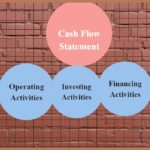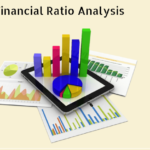The Valuation Ratio
To calculate the value of something is called the valuation of that thing. When the price of a share is calculated in the stock market, it is called the valuation of the share. Before investing in any business, it is seen that what should be its valuation. Valuation is also considered for buying a business. Sometimes a simple business at a low valuation is considered a better investment than buying a very good business at a very high valuation.
The valuation ratio tells us how the market is viewing the price of a given stock. That is, how much is its valuation. This tells us which is a good stock to invest in. This ratio tells us what kind of profit we can get if we buy this stock at this price. Like all other ratios, the ratio should be compared with the ratio of other companies.
The valuation ratio usually compares a particular part of a business to its share price. We will look at these 3 valuation ratios here
Price to Sales Ratio (Price to Sales – P/S ratio)
Price to Book Value Ratio (P/BV Ratio)
Price to Earnings Ratio (P/E Ratio)
We will again use Amara Raja Batteries Ltd as an example and look at these three ratios in it. The price of the Amara Raja Battery shares is of great importance in this example. Here I will take the share price of 28 October 2014 which is ₹661.
We also need to know the total number of outstanding shares of ARBL to calculate this ratio. We worked out the number of outstanding shares of shares in Chapter 6. This number was 17,08,12,500 i.e. 17.08 crores.
Price to Sales Ratio (P/S ratio)
Many times investors focus on the sales of the company more than the earnings of the company while choosing a company for their investment. Because sometimes it happens that the company’s earnings have come down due to some particular reason. Sometimes a company’s profits or earnings are also shown to decrease due to one’s accounting decisions, such as due to a large payment or due to some other reason. In such a situation, it is better for the investor to focus on the sale of the company. Under this ratio, the ratio between the sales of the company and the price of the company’s shares is seen, which is the formula to calculate the price to sales ratio.
Price to Sales Ratio = Current Price of Share / Sales or Sales Per Share
Now calculate its price to sales ratio for ARBL. For this we have to first remove the denominator.
Sales Per Share = Total Earnings / Total Number of Shares
As per the balance sheet of ARBL
Total income = 3482 crore
Total number of shares = 17.08 crore
Sales per share = 3482 / 17.081
= Rs 203.86
This shows that the company is selling at Rs 203.86 per share.
Price to Sales Ratio = 661 / 203.86
= 3.24x or 3.24 times
A price to sales ratio of 3.24 indicates that for every rupee sold, the share price is 3.24 times higher. The higher the price to sales ratio, the higher will be the valuation of the company. Competing with the price to sales ratio of other companies in this industry, we will know whether this stock is expensive or cheap.
Let us understand with an example how you decide to invest in a company by comparing the price to sales ratio. Suppose two companies A and B sell the same type of product in the market. Suppose the income of both the companies is also Rs.1000. Company A earns Rs.250 as PAT while Company B’s PAT is Rs.150. This means that the profit margin of company A is 25% while that of company B is 15%. This also means that the sales of Company A are more important than the sales of Company B. Therefore Company A has a higher price-to-sales ratio and higher valuation because Company A is earning more profit for every rupee sold.
If ever you feel that the share price of a company is looking higher than its price to sales ratio, then definitely check the profit or profit margin of the company.
Price to Book Value Ratio ( P/BV ratio)
Before understanding the price to book value ratio, we need to know what is book value.
Suppose a company has to wind up and has to sell all its assets. The minimum amount that the company will get on selling all the assets is considered to be the book value of that company.
Simply put, the amount of money left with the company after selling everything and meeting its liabilities is considered as its book value. If the book value of the company is Rs 200 crore, it means that the money received by the company on selling everything and out of which the company has met all its liabilities, then this is the amount left. Book value is usually stated as per share. If the book value of a company is Rs.60 per share, it means that every shareholder of the company should expect Rs.60 in case of a sale of the company.
The formula to calculate book value is:
Book Value (BV) = Share Capital + Reserves (After Revaluation Reserves) / Total No. of Shares
Now let’s take this for ARBL:
From the Balance Sheet of ARBL we know:
Share Capital = Rs 17.1 crore
Reserves = Rs 1345.6 crore
Revaluation Reserves = 0
Number of shares = Rs.17.081 crores
Book Value per Share = [17.1+1345.6-0] /17.081
= Rs 79.8 per share
This means that if ARBL has to sell everything, and after paying off the debt, each shareholder of the company should expect to get Rs 79.8 per share. If we divide the current share price of the company by the book value of the company, then we will get the price to book value, which shows how many times the company’s shares are selling at their book value. The higher the price to book value, the more expensive the company’s shares will be considered.
Now let’s calculate the price to book value for ARBL:
ARBL share price = Rs.661 per share
Book Value (BV) of ARBL = 79.8
Price to Book Value (P/BV) = 661/79.8
=8.3 times
This means that ARBL shares are selling at 8.3 times their book value.
A high price to book value means that the company’s shares are costlier than its book value and a low price to book value means that the company’s shares are getting cheaper than its book value.
Price to Earnings Ratio (P/E ratio)
Price to Earnings Ratio is probably the most popular financial ratio. Everyone wants to know the price to earning ratio of the company. It is also called the superstar of financial ratio.
To calculate the price to earnings ratio, the current share price of the company is divided by its EPS, i.e. Earnings Per Share. Before proceeding further let us once know what is EPS.
If the profit of the company is divided on the basis of per share, then the figure obtained is called EPS of the company. For example, suppose a company has 1000 shares and the company makes a profit of Rs.200000. Now the EPS of this company will be Earning Per Share
200,000 /1000
=200 per share
EPS tells us how much profit the company is making for each share. The higher the EPS of the company, the better it is for the shareholders. If you divide the current share price of the company by the company’s EPS, you will get the P/E ratio. This ratio shows how many times the premium the market players are willing to pay on the company’s share price over its profits. For example, a P/E ratio of 15 means that the market players are ready to pay 15 times the profit of the company to its shares. The higher the P/E ratio of the company, the more expensive that share will be.
Calculate the P/E ratio of ARBL:
From the annual report of ARBL we know:
PAT = Rs 367 crore
Total number of shares = 17.081 crore
EPS = PAT / Total No. of Shares
= 367 / 17.081
= Rs 21.49
Current price of ARBL shares = Rs.661
Hence P/E ratio = 661 / 21.49
= 30.76
This means that the market players are ready to take shares by paying Rs 30.76 on every part of the profit that ARBL is making. Now suppose that the share price becomes Rs 750 while the EPS remains the same at 21.49. Now the new P/E will be:
= 750 / 21.49
= 34.9
What do you think would have happened if the EPS stood at 21.49 per share and the P/E of the stock went up?
The P/E went up because the share price went up. We know that the share price rises when expectations from the company increase.
Remember that the company’s profits are used as the divisor when calculating the P/E ratio. Keep these things in mind when looking at the P/E ratio:
The P/E ratio tells us how expensive or cheap a stock is getting. Never buy shares at very high valuations. Personally, I never buy shares above a P/E ratio of 25 or 30, regardless of the company or sector.
While working out the P/E ratio, earnings are always taken as the denominator and earnings can be manipulated by the company.
Note that the company is not changing its accounting policy frequently, if it is doing so then it means that it is trying to distort its earnings.
Keep an eye on the company’s depreciation as well. Sometimes companies show more earnings by showing less depreciation.
If the company’s earnings are increasing but its cashflow and sales are not increasing, then it means that something is wrong somewhere.
Valuation of the Index
Like stocks, stock market indices like BSE Sensex and CNX Nifty 50 also have their own valuations. Which you can measure by things like P/E, P/B, Dividend Yield Ratio. Generally, stock exchanges report the valuation of their index every day. The valuation of the index tells us whether the market is expensive or cheap at the moment. To find the P/E ratio of CNX Nifty 50, the National Stock Exchange adds up the market capitalization of 50 stocks in its index and divides it by the earnings of all 50 companies. By looking at the P/E ratio of the index, we get to know how the market players are viewing the market at the moment. Take a look at the chart of P/E ratio of Nifty 50:
 Looking at the chart above, we get to know some important things:
Looking at the chart above, we get to know some important things:
The highest valuation of the index was 28 times that of early 2008. After this there was a sharp decline in the market.
After this fall, the valuation of the market has dropped to about 11 times what it was in late 2008 and early 2009. This was the lowest valuation of the Indian stock market in the last few years.
Generally, the P/E ratio of the Indian stock market index is in the range of 16 to 20 times i.e. 18 times on an average.
In 2014 it was trading at 22x which is above average P/E.
On the basis of this, we can draw some conclusions.
We should be careful while investing in the stock market above the P/E ratio of 22.
The best time to invest in the stock market is when the valuation is around 16.
The best way to find out the P/E ratio of an index is to visit the website of the National Stock Exchange (NSE), where it is reported every day.
On the home page of NSE click on Product> Click on Index>Click on Historical Data>P/E, P/B & Div> search
(NSE’s home page click on Products > Indices > Historical Data > P/E, P/B & Div > Search)
Enter your current date as the search scope and you will see the most recent P/E valuation. Remember that NSE updates it every day at 6:00 PM. See a picture of the search result:

Here you will see that the stock is trading around its highest P/E in the market. We need to be more careful before investing at this stage.
Highlights of this chapter
- Valuation usually means finding out the value of something.
- We may need data from both the P&L statement and the balance sheet to work out the valuation ratio.
- The price to sales ratio compares the company’s share price with the company’s sales per share.
- Sales per share means the total sales figure of the company divided by the number of shares.
- Sales of a company with high profit margin is more important than that of company which has low profit margin.
- Book value means the total amount of money left with a company if it has gone bankrupt and has met its liabilities.
- Book value is usually stated as per share.
- The Price to Book Value Ratio tells how many times the company’s shares are selling at their book value.
- EPS measures the profit of the company on a per share basis.
- The P/E ratio describes the price the market players are willing to pay per share for the company’s profits.
- While looking at the P/E ratio, one should keep an eye on the possibility of a change in profits.
- The valuation of a stock market index can also be measured by P/E, P/B or dividend yield ratio.
- One should be a little careful while investing when the index is at a valuation of more than 22 times.
- A valuation of 16 times the index is very good for investment.
- The valuation of the index is posted every day by NSE on its website.

Gaurav Heera is a leading stock market educator, offering the best stock market courses in Delhi. With expertise in trading, options, and technical analysis, he provides practical, hands-on training to help students master the markets. His real-world strategies and sessions make him the top choice for aspiring traders and investors.




